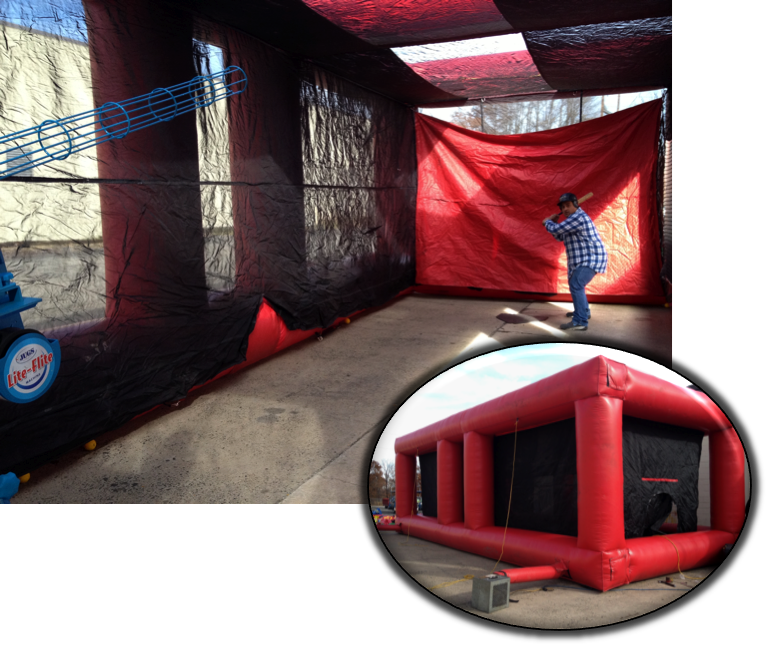
Below is a list of options and recommendations. There are several options for flooring and the cost of maintenance requirements vary. Consider placing multiple 2-up cages in different parts of your complex.Coaches and players appreciate not having to warm up next to opponents.A double cage (side-by-side) is a great setup, but adding more cages (3up, 4up or more) means that there will be a herd of players and coaches stacked on top of one another.However, this can cause problems for competing teams. Having multiple cages side-by-side can save money.

#B a sweetie batting cages install#
Always install batting cages a minimum of 4′ away from any potential snag points like chain link fences, tree limbs, etc.When placing two or more batting cages in any one area, consider the safety risk of dozens of players and coaches swinging bats in a small area.Orient your batting cage north-to-south to prevent the sun from blinding hitters and pitchers during batting practice.For multi-field sites, consider these points: How the cages will be used and safety are the most important factors. From location to maintenance, here are the most important considerations to effectively incorporate batting cages into your ballfied. A Harvard nutritionist shares the No.Ballfield Dimensions Guide Batting Cages - Important Considerationsīatting cages are an important part of any ballfield.A brain expert shares his 7 'hard rules' for boosting memory and fighting off dementia.1 thing that sets 'SuperAgers' apart from people with 'weak memory skills' Follow him on Twitter, Instagram and TikTok. Marc Milstein, PhD, is a brain health expert and author of "The Age-Proof Brain: New Strategies to Improve Memory, Protect Immunity, and Fight Off Dementia." He earned both his PhD in Biological Chemistry and his Bachelor of Science in Molecular, Cellular and Developmental Biology from UCLA, and has conducted research on topics including genetics, cancer biology, neuroscience and infectious disease, and his work has been published in many scientific journals. These aren't really "nothing," but they're all things I'm grateful for and can easily miss during the week. Mostly, I prioritize fun on the weekends and make time to do a bit of nothing. Maybe put my feet up. We usually have a low-key dinner, then enjoy some live music, a show, or go to a sporting event. Remember, newness is healthy for the brain.

I live in Southern California, and there's always so much to explore, whether it's a new restaurant, museum or park. Late afternoons: Back to work, brain snacks, exercise Our brain thrives on social connection, so I also try to meet up with my parents, sister, a friend or my wife for lunch at least once a week. Salmon-avocado or cucumber sushi rolls made with brown rice, and a side of edamame or miso soup.Chicken and avocado salad with blueberry balsamic dressing, with brown rice or whole-wheat pasta.Stir-fry with lean meats and vegetables like peppers, carrots, cauliflower, mushrooms and broccoli.Salmon with roasted vegetables and brown rice or quinoa.Sandwich with whole-grain bread and spinach, tomatoes, avocados and non-processed deli meat without nitrates.Whole-grain tortilla wrap with leafy greens, beans, and lean protein like tuna, salmon, tofu and chicken.

During the summer, I'll go swimming, which has been shown to improve memory, cognitive function and energy. I try to take two-minute stretch breaks every 30 minutes.Īt 11:30 a.m., I do a pre-lunch workout. I tackle my most difficult and creative tasks early in the day, when my brain is most alert.


 0 kommentar(er)
0 kommentar(er)
